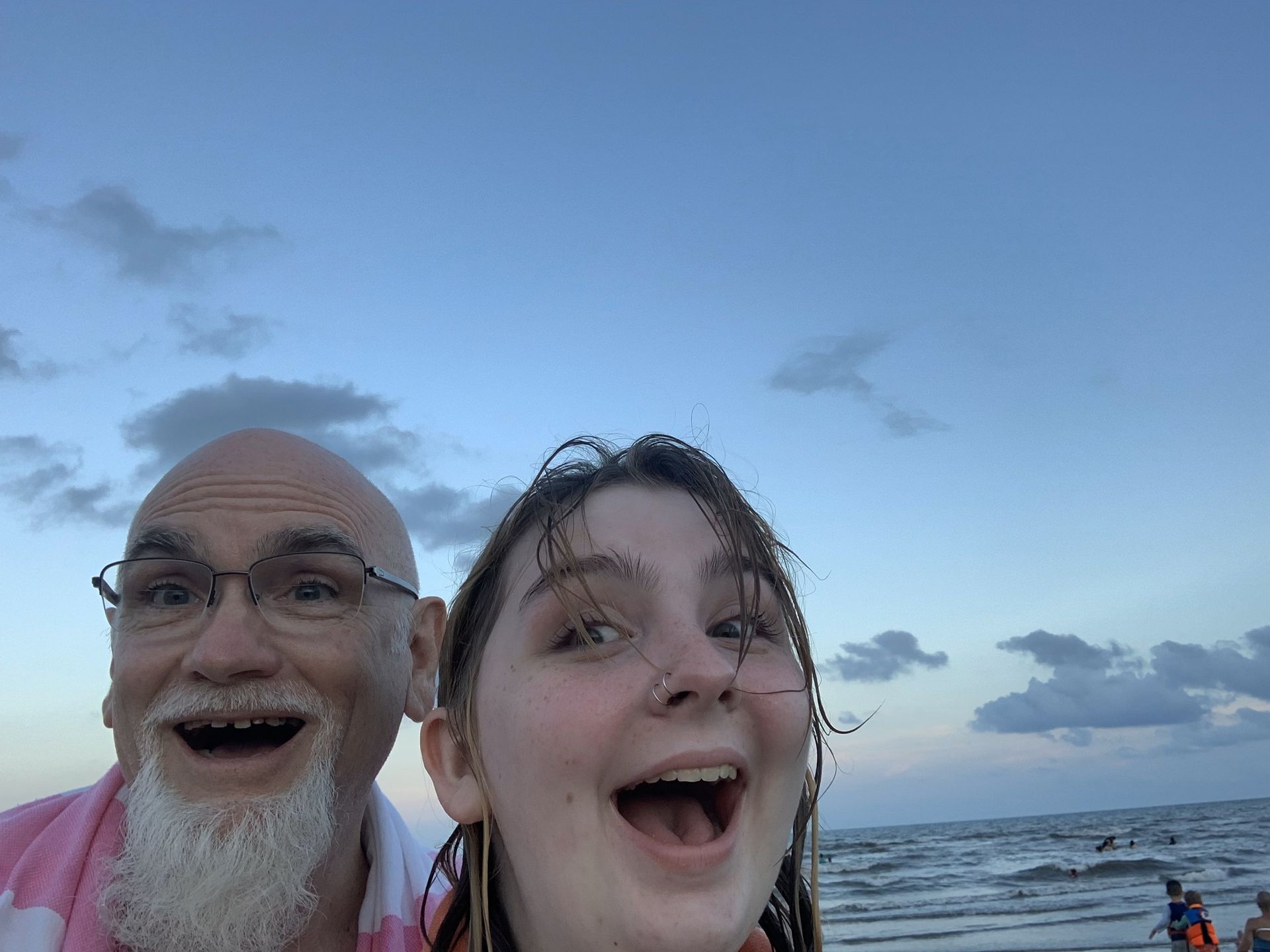Be Good To You: Taking the Steps 2020 - Step Four
The ultimate weapon for recovery is the person living in recovery.
I cannot stress enough
the importance of going through each Taking Steps 2020 episode starting from
Step One in January. They are in order
for a reason.
If you want to proceed anyway, Please hold on; if following rules, taking orders, doing things in order, or following someone else’s process is difficult for you, I understand. But if you’re willing to try something different for a brief period of time, you can see for yourself if it works in ways which benefit you physically, mentally, or spiritually, I’m suggesting that you try this. Practicing trust and patience used to be huge no-no’s for me, but the outcomes I experienced by doing everything my way on my time were eventually enough proof for me to see that my way doesn’t work. Allow yourself a chance to try something different, then decide.
Trust in that the order
and the wording of the steps are the result of generations of trial and error
and adapting through continuous improvement. Know that humans are incapable of
perfection, so give yourself a break. Oh, and give a break to those who are
living examples of who you’d like to be, for none are perfect teachers.
Find patience by allowing for the time it takes to do the internal work. You’ll need to pause long enough to work these through before you move on from one to two to three, etc.
Alright, so let’s get
started on this month’s Topic, which really is COURAGE TO CHANGE – the courage
it takes to live as a person of integrity. We’re going to be looking at the
times we haven’t exactly been an honest, reliable, accountable, responsible
person, what we told ourselves when we weren’t those things, but also how often
we were, and what we were telling ourselves that motivated us positively to see
what happens.
Even if we’ve put
together some clean time, step four is the worst possible place to stop doing
the work. So let’s keep the momentum going.
In AA, the Big Book
states that “A business which takes no regular inventory usually goes broke.”
Step Four says, “We made a searching and fearless moral inventory of
ourselves.” One question I hear right off the bat is, “Why moral? I thought we
could choose our own Higher Power. Moral brings to mind thoughts of sin and
Christianity and guilt. How is this different?”
There is no
condemnation via the twelve steps.
Before we begin on our
inventory, we pray to our Higher Power for the ability to be thorough.
Remember, the 12 steps are a program which offers Freedom Of Conscience. There
is absolute personal autonomy when it comes to what and how you wish to believe.
Our choice in picking a Higher Power is highly individualistic.
Our affliction is of a
body-mind-soul disease.
The disease part is not immoral, it just is. But our behaviors which are evidenced in the form of actions we take that originate from the disease are immoral. Our predecessors figured out that we all carry an enormous burden of guilt. The reason for listing our guilt in this step is because they also figured out that, if we don’t resolve the guilt of the past, we are much more likely to relapse. They found this out through experience. As Father Martin said, “Resolve the guilt of the past because you cannot live with the guilt clean.” This list is essential to fully experiencing the joyous freedom you are getting clean to enjoy.
This is where we begin
to see that our recovery is about doing much more than being abstinent. It’s
about honesty. We put what we know to be true on paper. We let ourselves see
that being truthful is braver than being dishonest. We can finally, fearlessly
let our secrets out, for they’ve been liabilities far too long. And in trusting
we’ll be okay doing so, we can begin to look at our assets. For many of us,
there is a lifetime of self-deception to unravel. We can start today.
It’s been said that an
inventory is one of the most loving things we can do for ourselves. I believe
that. We look our instincts, desires, motives, tendencies, and compulsions,
what NA literature calls our basic nature with its flaws and its strengths
.
It is also suggested
that each person has guidance and support while working this step. This is
where a sponsor is a huge asset. And while this is true, the literature states
that this step is to be shared with ourselves, God, and another human
being—that person does not have to be our sponsor.
I’ve put a lot of
thought into how I would touch on the key points of the fourth step for my
Taking Steps 2020 Be Good To You podcast. I’ve got to admit, this step presents
a challenge. I could say to you, alright, grab a couple sheets of paper and
let’s get started. There’s a little more groundwork to lay beforehand.
To identify as many
things as we can and be thorough as possible for our inventory, we have to look
back through as many memories as we can muster about people, institutions, organizations,
principles or beliefs, events, situations and resulting circumstances, and how
these bring out positive and negative feelings.
Let’s start on this
step together with a prayer.
“Higher Power/God.
We’re grateful for this opportunity to heal. Thank you for allowing recovery in
our lives. We pray for the courage to be thorough when writing out our
inventory. We pray for your guidance and honesty as we recall people, places,
and events. And we pray for your strength and love as we write out these
things. Amen.”
The way it was taught
to me was:
Start with the heading: Part I: Grudges - slash - Resentments.
In the first column,
list People, Institutions, and Principles.
In the second, list
Cause/Reason.
In the third, list
Affects My.
In the fourth, list End
result Was.
A couple examples.
An institution I listed was Capitalism. My reason was because it places money above people. This affects me in that I believed I was unworthy when I was broke, which was most of the time. The result was isolation and resentment towards those who had more.
A person I listed was
my first girlfriend. My reason was that she cheated on me then dumped me. This
affected my pride and fear in future relationships. The result was insecurity.
Take up as many pages
as you need.
On a new sheet, put at
the top, PART II: Fear.
Write down as many deep
dark fears as you can think of that you keep inside and don’t want anyone to
know about you. Most of the sentences I wrote started with the word, “OF.”
Some examples:
Of my parents
disapproval.
Of my girlfriends
disapproval.
My bosses disapproval.
Of getting old.
Of being with someone
indifferent to my needs.
Of being unattractive.
In listing your fears,
be thinking of past resentments, what motivated you, what was your part, what
were the repercussions, how did you harm others, how did you feel about your
actions, & their reactions.
On a new sheet, put at
the top PART III: Relationships.
Ewwww, I know.
In the first column,
list the heading with the person’s name.
In the second column,
list the harm caused. Just look at your part.
In the third column,
list how it made them feel.
In the last column,
list the result.
I can’t go into
examples, because they are personal names of those in my past. I think you get
the idea on this one.
Make every attempt to
acknowledge your most painful, embarrassing, most difficult events, thoughts,
emotions, and actions, since these were actually at the root of our addictive
behaviors. I ask that you recall feelings of fear, pride, self-will, self-pity,
guilt, shame, sexuality, abuse, secrets, and then the hardest one for many of
us, assets.
On the last page, yep!
Almost done. At the top of the page write: PART IV – What Am I Proud of myself
for?
What are some of your
positive contributions?
What are some of your compulsions to be positive?
Healthy behaviors?
We have a lot of ground
to cover.
Take a deep breath.
I said this before and
I’ll say it again: There is a Power working in your life which is greater than
you or me. It is kinder to you and more loving of you than you are of yourself.
This Power wants to
have a relationship with you, a connection. This Power wants to help you find
the courage to answer these questions thoroughly, honestly, and willingly.
The Higher Power of
your choosing is not afraid of your fears. My Sponsor, Eric E. has often said
self-centeredness and fear are at the core of our disease. If I look closely,
Fear is behind some of my worst actions and inactions. The times I’ve tried to
protect myself from imagined worse case scenarios were the times I drove the
bus off the cliff—which was pretty much anytime I attempted to control my life
and the lives of people and things around me. I sought, and found many
ways to do this: by using or manipulating or cheating, plotting my eventual
personal victory, lying and scheming, then lying more to cover up schemes, and
then scheming more to cover up lies. I was setting up failures. Painful
failures.
Have you ever found
yourself pushing people away just so you could get loaded without remorse?
Isn’t it odd that we don’t see that until we find recovery? These kinds of
patterns of behaviors become apparent when we write them out. Our brains get
full, maybe even overflowing, with bouncing echoes of thoughts and
counterthoughts around quitting. We get overwhelmed by our own ideas of how to
break the cycle. When we are able to look at and write out what we’ve done, and
how we’ve tried, we are granted a gift. We can finally see that every time we
broke our own promises and deadlines, we broke our own spines. We decreased our
hope.
The first three steps
are proving to us that hope can be restored. But for a fourth step inventory to
really help you, you’ve got to be thorough, and you’ve got to do it with
another person. If that’s too great of a leap of faith for you, I will help you
out.
It really comes down to
choosing whether or not you wish to stay in those patterns, or be open to a
different perception – is it asking too much that you ponder an alternate
belief? Just try it. I suggest that you look for proof either way, practice
your finding, then honestly assess which path leads to a rational thinking you
can come to believe in.
I hope this helps.
I live for interacting with you.
Remember, Be Good To You.


